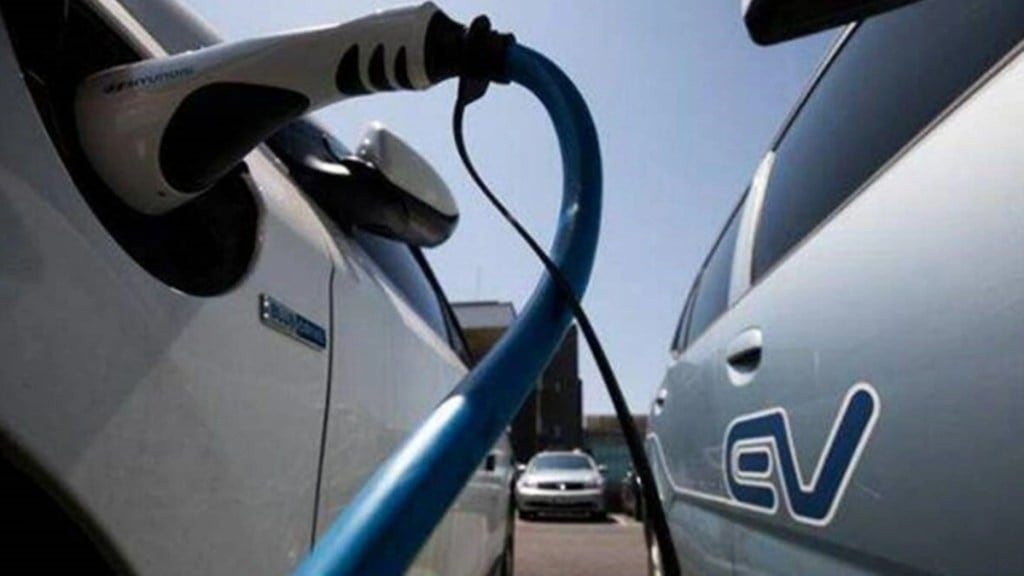With OEMs planning to bolster their passenger electric vehicle (EV) portfolio with a host of new models in the next few years, industry experts say the country will require a better charging infrastructure to support the adoption of such vehicles.
In FY22, out of a total of 2,726,047 passenger vehicles (PVs) retailed in India, merely 17,802 were EVs, translating into a minuscule share of 0.65%, according to data from Federation of Automobile Dealers Associations (FADA).
However, with more options available, sales of passenger EVs are expected to grow in future. The government is targeting 30% EV penetration for the PV segment by 2030.
While the lack of a charging infrastructure is one of the biggest challenges for the EV sector at present, with the country having just over 1,742 charging stations, a recent joint report by EY, IVC Association and IndusLaw said this number is expected to increase to 100,000 units by 2027.
Also read: Bharat Forge profit rises 5%, revenues up 35% in Q1
“An adequate presence of charging points, especially for fast charging, can tip the scales in favour of EVs, especially as cars and two- to four-wheelers are expected to be used for long-distance transport,” the report said.
Mahindra & Mahindra’s executive director for auto and farm sectors, Rajesh Jejurikar, had recently said no one player can create charging infrastructure and it will be a function of what governments, startups and multiple individual companies start working to create.
Suraj Ghosh, director, mobility, S&P Global, said, “Home charging or charging at office parking spaces should be good enough for the current usage patterns, which are mostly intra-city or short daily commutes. Having said that, travelling long distances in EVs is still a major concern and solutions should be looked at to address it.”
“It could be either charging infrastructure along highways or expressways or bigger batteries with a longer range. Battery swapping may not be very suitable for passenger EVs,” Ghosh said.
Apart from charging infrastructure, the other area of concern is subsidies being provided on passenger EVs at present as experts said they are being provided to increase adoption in the early stages and are not sustainable in the long run.
In June 2021, the government extended the second phase of the FAME (Faster Adoption and Manufacturing of Hybrid and Electric Vehicles) scheme for two years from March 2022 to March 2024. It aims to support 55,000 EVs and strong hybrid vehicles through subsidies.
“Policy support in the form of subsidies and tax breaks is temporary at best, no government can continue it for long periods. If the price gap between EVs and ICE vehicles does not narrow naturally, withdrawing incentives will adversely impact demand for EVs,” Ghosh said.
Ravi Bhatia, president of JATO Dynamics India, said it is too premature to start thinking of subsidy withdrawal. “Going by the experience from other markets, we will need subsidies to continue till we achieve 20% penetration or prices come down, whichever is earlier,” he said.
Also read: Toyota Kirloskar Motor reports record wholesales of 19,693 units in July, up 50%
Tata Motors, which had a market share of 87% in the passenger EV segment in FY22, will launch two new electric models, Curvv and Avinya, by 2025. The company showcased concept variants of both EVs in April. It is already leading the market with models like Nexon EV and Tigor EV.
Mahindra unveiled five electric SUVs — XUV.e8, XUV.e9, BE.05, BE.07 and BE.09 — under the XUV brand and the new electric-only BE brand last week. All the models are based on the new INGLO EV platform, which uses components from Volkswagen Group’s modular electric drive matrix (MEB) platform. While XUV.e8, XUV.e9, BE.05 and BE.07 will be launched between December 2024 and October 2026, the company has not revealed the launch timeline for BE.09 yet.
Besides, Mahindra is gearing up to launch the XUV400 electric SUV next month. The company expects electric SUVs to make up almost 30% of its overall SUV portfolio by 2027, contributing volumes of up to 17,000 units a month and 200,000 units a year.
Although the country’s largest ICE passenger vehicle manufacturer, Maruti Suzuki, has been testing 50 units of electric WagonR for quite some years, it will launch its first EV only by 2025. In March, Suzuki Motor Corporation signed a pact with the Gujarat government to invest nearly Rs 10,445 crore for local manufacturing of EVs and batteries.
Hyundai, which sells the Kona EV in India, is also bullish about expanding its EV portfolio. The company has already announced that it will introduce six new electric models across body shapes in the country by 2028. The first among them would be Ioniq 5 which will be launched later this year. The company will invest `4,000 crore in EV R&D, including introducing a dedicated EV platform, electric global modular platform (E-GMP), for manufacturing/assembling EVs in India.
MG Motor India will launch a new EV in the price bracket of Rs 12 lakh to Rs 16 lakh next year, adding variety to its existing portfolio that includes ZS EV. Kia India introduced EV6 in June and is evaluating several other EVs for the domestic market. It is also planning to develop an India-centric EV, which will enter the market by 2025.



















